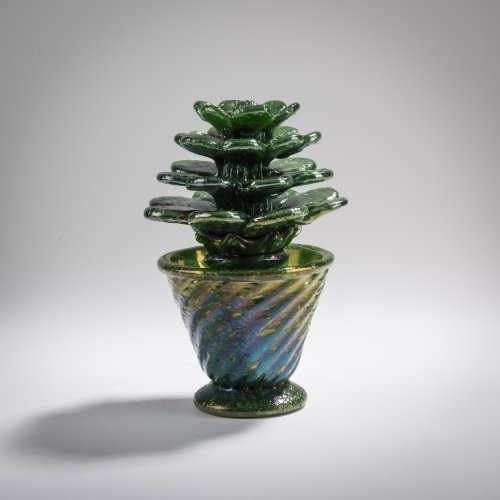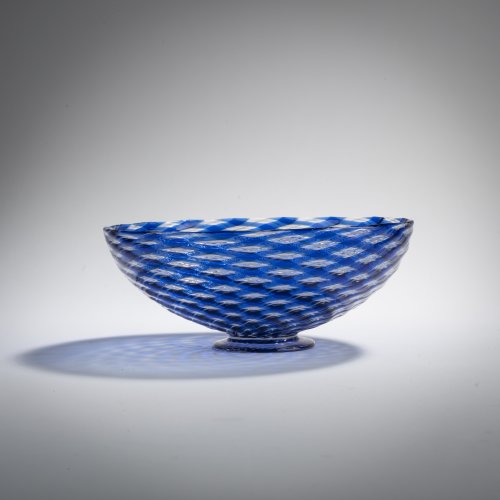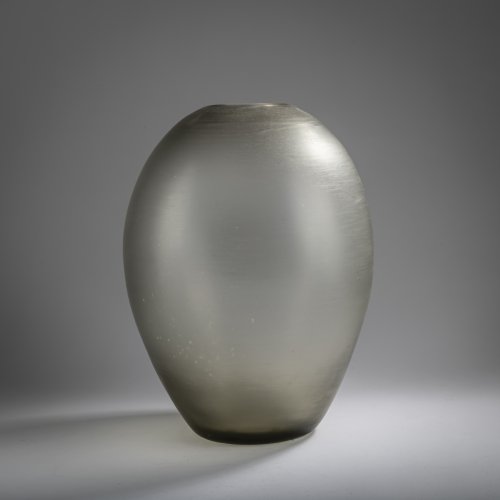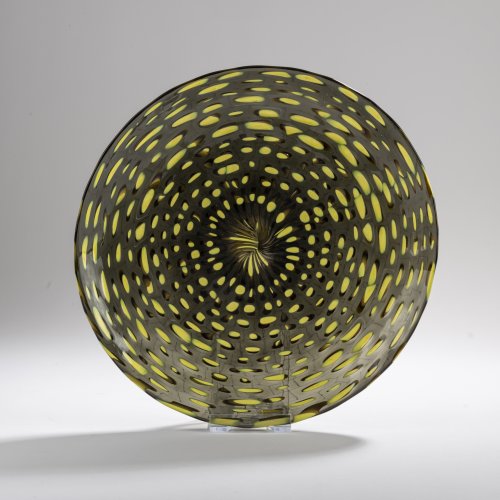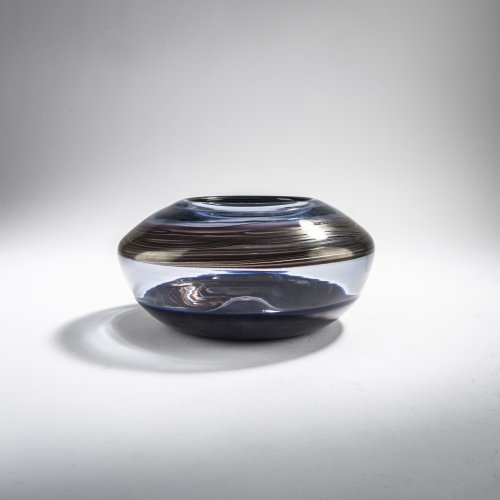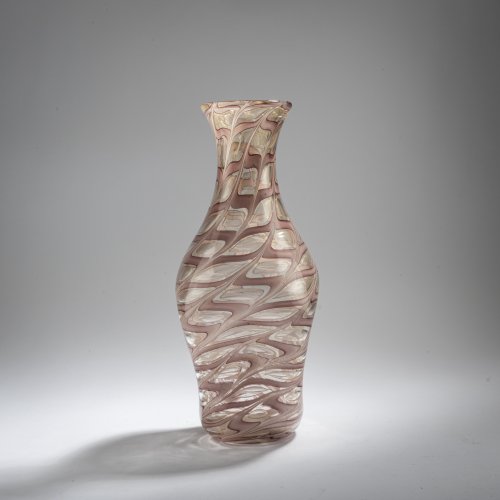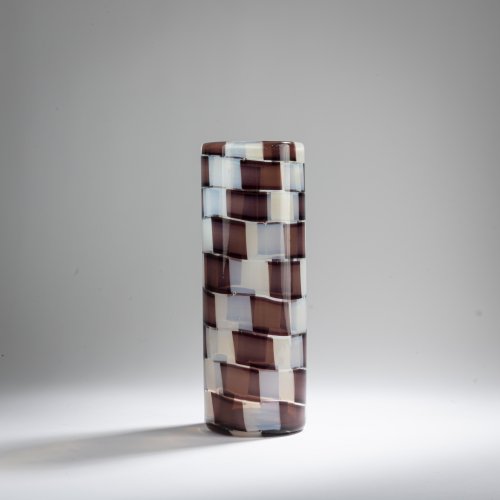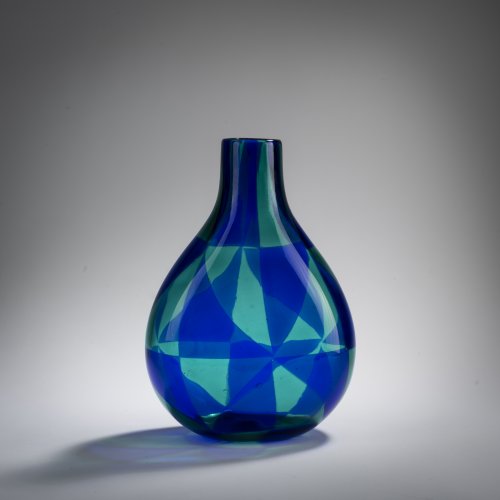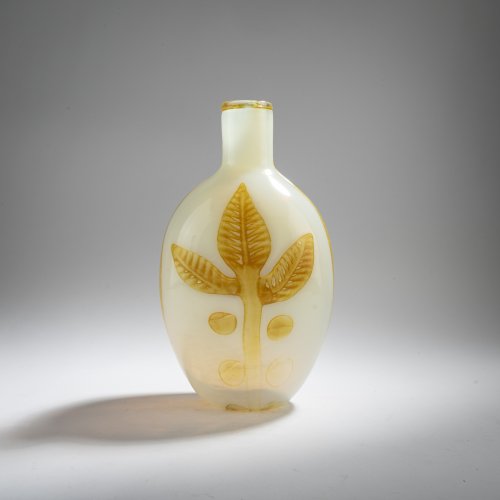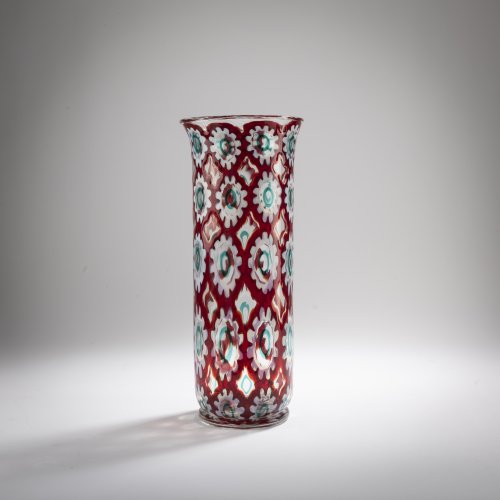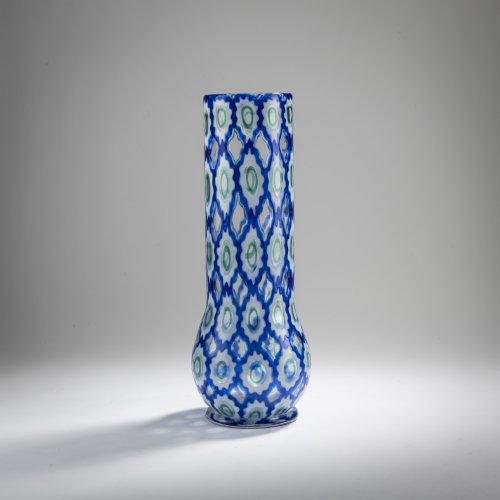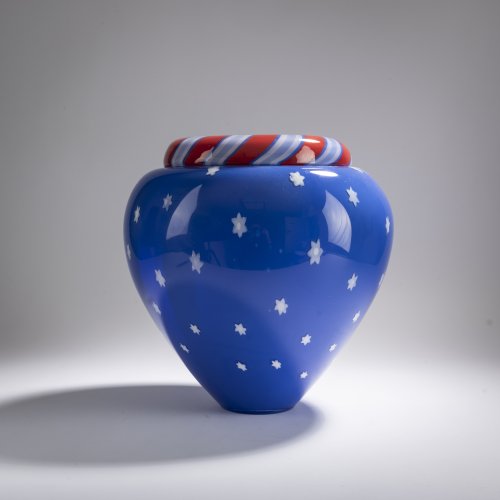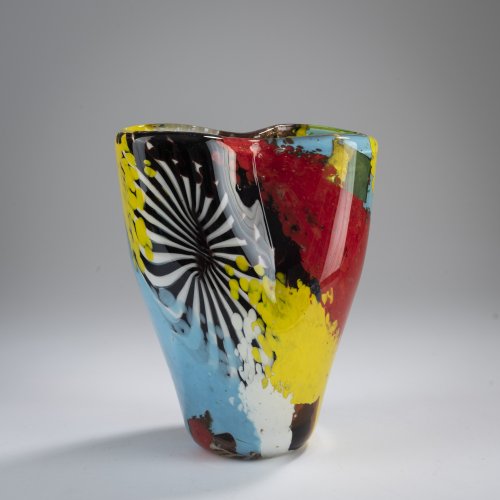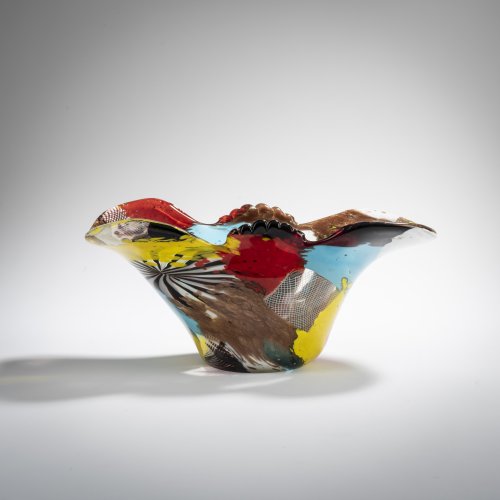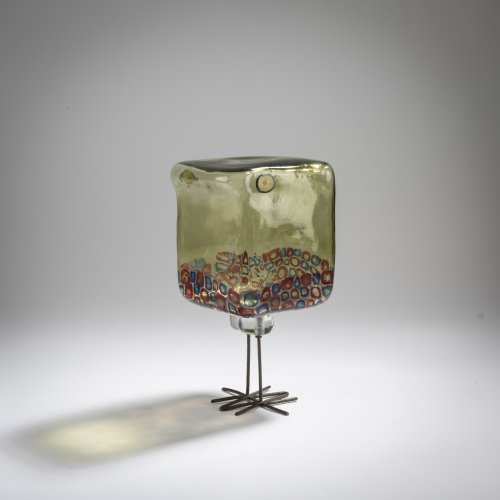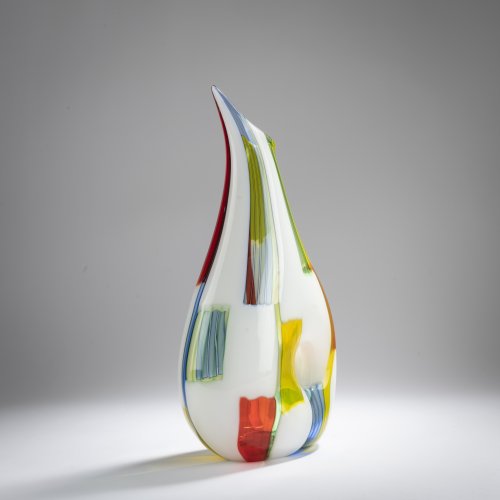Auction 167C
Murano Glass
16. March 2023 at 3:00 PM CET
Catalogue
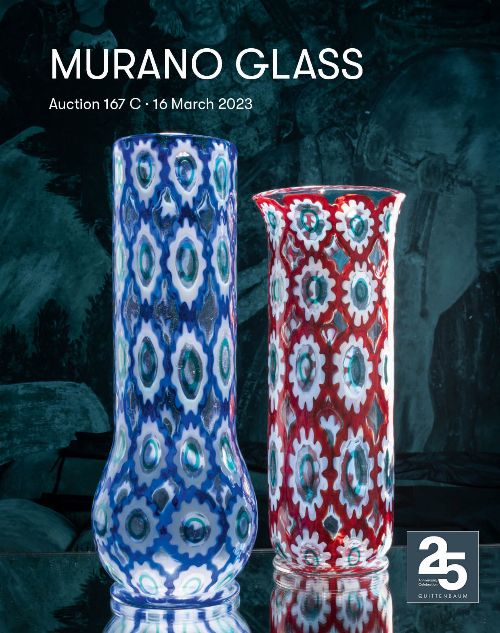
30.00 € including VAT plus shipping costs
Browse auction catalogue onlineIn 1911, the Fratelli Toso manufactory, which was otherwise known for serial decorative works in the traditional style, engaged the renowned artist Hans Stoltenberg-Lerche. Outstanding works were to be created for the 10th Venice Biennale and so the sculptor, who was born in Düsseldorf and worked in Rome and Paris, was invited to the Serenissima. Stoltenberg-Lerche was already known for his figurative symbolist vessels from the turn of the century - among other things, he was awarded a gold medal at the Paris World's Fair in 1900. In Murano, the trained ceramist obviously occupied himself intensively with the material, which was foreign to him, and discovered its advantages. Transparency in varying intensity, the colorfulness, which, affected by this, pulsates between strongly luminous and delicately shimmering. With the help of the master glassblowers at the Fratelli Toso manufactory, he translated his artistic ideas into the unfamiliar material, and thus created unique, never-before-seen vessels with atmospheric, impressionistically abstracted views. This vase, which is estimated at € 6,000 - 7,000 and comes from an important German private collection, offers great scope for interpretation. The vase is roughly divided horizontally into three color fields, where the violet in the lower area could represent the dark waters of Venice and the bright yellow and green in the middle the illuminated buildings above. Fratelli Toso thus started the tradition of bringing foreign artists to the city ten years earlier than the Venini manufactory, which had a reputation for this.
Venice, as a trading center with global significance since the Middle Ages, has always taken advantage of the influx of knowledge and creativity that comes along. The outflow was rather curbed - for example, glassblowers were not allowed to leave Venice in the Middle Ages. When things started to look up again after the First World War, the Venini manufactory, founded by Milanese lawyer Paolo Venini, hired internationally renowned artists in quick succession. Vittorio Zecchin, Napoleone Martinuzzi, Tomaso Buzzi and Carlo Scarpa - even Swedish-born artist Tyra Lundgren. Two important vases created by Carlo Scarpa for Venini are on offer in the auction. Valued at € 10,000 - 14,000, the 'Battuto' vase was designed by Scarpa around 1940. It is in a dark amber color with a finely textured, hammered surface. The vase is marked with the acid stamp 'venini murano ars', which was only used in the early 1940s. The addition 'murano ars' had to be used because of the customs restrictions in place during the war years to declare that it was art and not a material suitable for war. Scarpa designed the slender vase in delicate green 'Corroso' as early as 1938. It is estimated at € 3,800 - 4,800 in the auction. Scarpa was fascinated by the comprehensive treatment of the surface of the glass body, which can be seen from the fact that he used various techniques: roughening by acid etching, metallic luster (iridescence) by firing in the reduction kiln and structured matting with the help of the grinding wheel. In addition to transparency and colorfulness, he thus added another dimension to the vessel. This extra dimension regulates the effect of the other two, especially when the light conditions change, for example during the course of the day in case the vessel is placed on the windowsill. The surface structure can then have a strengthening or weakening effect.
In the period after the Second World War, Venini continued to rely on international artists. The American artist Thomas Stearns was only active for Venini for a very short time. His works created in Murano, combine traditional glass techniques with avant-garde art. The horizontally structured vase that will be offered in the auction is related to Mark Rothko's color field painting. In an elaborate 'incalmo' technique, three glass pieces are connected to each other, deep blue at the very bottom, almost transparent glass in the middle and transparent glass in the upper area with a surrounding, dense, strongly iridescent black thread overlay. The assumption that here, too, a strongly abstracted landscape or city view is the inspiration is obvious. The extremely rare vase 'A fili', made in 1962, is estimated at € 12,000 - 18,000.
Ercole Barovier's designs from the 1960s are extremely colorful. The 1969 tartan bottle with stopper dedicated to Christian Dior is estimated at € 5,000 - 6,000. The vase 'Intarsio' in large light and dark blue triangles, created as early as 1961, will enter the auction at € 4,000 - 5,000. Moreover, two tall vases of the extremely rare 'Rotellato' design from 1970 are on offer. Here, luminous murrines in blue or red with opalescent white are closely strung together. The association here wanders between a lively floral textile pattern, as we know it from those days cardigans, and images from technology, as they could also be interlocking cogwheels. Whether red or blue, the vases are valued at € 8,000 - 10,000 each.
German collectors are enthusiastic about particularly rare vases
Many works by Ercole Barovier were among the top results of the auction, but the highest hammer price went to the 'A fili‘ vase created by Thomas Stearns for Venini in 1962. After being called at € 12,000, a collector from Germany prevailed against American competition at € 24,000. Two German collectors vied for the second most expensive piece in the auction, Ercole Barovier's 'Decoro argento‘ vase, which was knocked down at € 17,000, more than four times its lower estimate.
Other German Murano fans secured the two cover lots at their lower estimates, at € 7,000 and € 8,000 respectively. Called at € 5,500, Barovier's ‚Pezzato' vase set off for the Netherlands at a hammer price of € 7,000. Dino Marten's ‚Oriente‘ bowl headed to the USA for € 5,500, and one of the five „Pulcino“ birds by Alessandro Pianon that will now delight a German collector's heart, were content with smaller price increases.
Another American designer, James Carpenter, created the 'Zabra‘ vase for Venini around 1980, it experienced particularly high increases. In this case, the bidding went up from € 500 to € 2,600; similarly remarkable the bird-shaped bowl by Dino Martens, which went up from € 400 to € 1,600.
All unsold lots will be offered in the post-auction sale until April 14.

